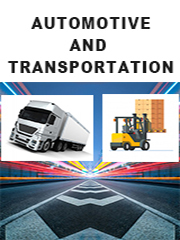Augmented reality is a digital layer superimposed on the physical world. Augmented reality applications are developed on special 3D programs that enable developers to integrate contextual or digital content with the real world. Moreover, it integrates the real-life environment with virtual details that enhance the experience. This is typically achieved by looking at real-life environments through a smart goggles and headsets, smartphone or tablet screen. Augmented reality in automotive is majorly used for the application that displays the features of pedestrian, navigations, and smart signaling on a windshield.
This report aims to provide a comprehensive presentation of the global market for Automotive AR and VR, with both quantitative and qualitative analysis, to help readers develop business/growth strategies, assess the market competitive situation, analyze their position in the current marketplace, and make informed business decisions regarding Automotive AR and VR. This report contains market size and forecasts of Automotive AR and VR in global, including the following market information:
Global Automotive AR and VR Market Revenue, 2018-2023, 2024-2029, ($ millions)
Global top five companies in 2022 (%)
The global Automotive AR and VR market was valued at US$ 582.2 million in 2022 and is projected to reach US$ 6813.8 million by 2029, at a CAGR of 42.1% during the forecast period. The influence of COVID-19 and the Russia-Ukraine War were considered while estimating market sizes.
The U.S. Market is Estimated at $ Million in 2022, While China is to reach $ Million.
Augmented Reality (AR) Segment to Reach $ Million by 2029, with a % CAGR in next six years.
The global key manufacturers of Automotive AR and VR include Continental AG, DAQRI, HTC Corporation, Hyundai Motor Group, Microsoft Corporation, Robert Bosch GmbH, Unity Technologies ApS, Visteon Corporation and Volkswagen AG, etc. in 2022, the global top five players have a share approximately % in terms of revenue.
We surveyed the Automotive AR and VR companies, and industry experts on this industry, involving the revenue, demand, product type, recent developments and plans, industry trends, drivers, challenges, obstacles, and potential risks.
Total Market by Segment:
Global Automotive AR and VR Market, by Type, 2018-2023, 2024-2029 ($ millions)
Global Automotive AR and VR Market Segment Percentages, by Type, 2022 (%)
- Augmented Reality (AR)
- Virtual Reality (VR)
Global Automotive AR and VR Market, by Application, 2018-2023, 2024-2029 ($ millions)
Global Automotive AR and VR Market Segment Percentages, by Application, 2022 (%)
- Research & D R evelopment
- Manufacturing & Supply
- Marketing & Sales
- Aftersales
- Support Functions
- Product
Global Automotive AR and VR Market, By Region and Country, 2018-2023, 2024-2029 ($ Millions)
Global Automotive AR and VR Market Segment Percentages, By Region and Country, 2022 (%)
- North America
- US
- Canada
- Mexico
- Europe
- Germany
- France
- U.K.
- Italy
- Russia
- Nordic Countries
- Benelux
- Rest of Europe
- Asia
- China
- Japan
- South Korea
- Southeast Asia
- India
- Rest of Asia
- South America
- Brazil
- Argentina
- Rest of South America
- Middle East & Africa
- Turkey
- Israel
- Saudi Arabia
- UAE
- Rest of Middle East & Africa
Competitor Analysis
The report also provides analysis of leading market participants including:
Key companies Automotive AR and VR revenues in global market, 2018-2023 (estimated), ($ millions)
Key companies Automotive AR and VR revenues share in global market, 2022 (%)
Further, the report presents profiles of competitors in the market, key players include:
- Continental AG
- DAQRI
- HTC Corporation
- Hyundai Motor Group
- Microsoft Corporation
- Robert Bosch GmbH
- Unity Technologies ApS
- Visteon Corporation
- Volkswagen AG
- WayRay AG
Outline of Major Chapters:
Chapter 1: Introduces the definition of Automotive AR and VR, market overview.
Chapter 2: Global Automotive AR and VR market size in revenue.
Chapter 3: Detailed analysis of Automotive AR and VR company competitive landscape, revenue and market share, latest development plan, merger, and acquisition information, etc.
Chapter 4: Provides the analysis of various market segments by type, covering the market size and development potential of each market segment, to help readers find the blue ocean market in different market segments.
Chapter 5: Provides the analysis of various market segments by application, covering the market size and development potential of each market segment, to help readers find the blue ocean market in different downstream markets.
Chapter 6: Sales of Automotive AR and VR in regional level and country level. It provides a quantitative analysis of the market size and development potential of each region and its main countries and introduces the market development, future development prospects, market space of each country in the world.
Chapter 7: Provides profiles of key players, introducing the basic situation of the main companies in the market in detail, including product sales, revenue, price, gross margin, product introduction, recent development, etc.
Chapter 8: The main points and conclusions of the report.
